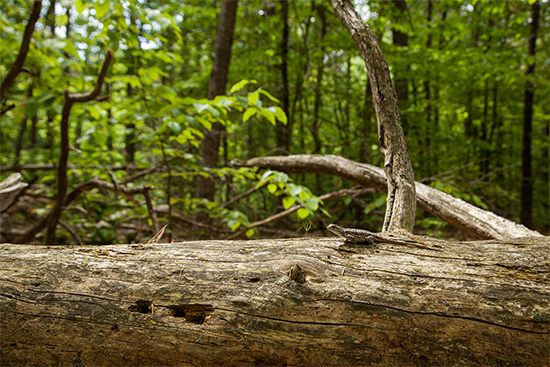By the Numbers: 110,701
The acres of forestland protected by the Maryland Forest Conservation Act in the two decades since it was passed

In a watershed whose population has expanded by more than eight million people in the last 50 years, protecting land while allowing urban and suburban growth can pose a challenge. But one piece of Maryland’s land protection puzzle has proven successful in protecting forests and, according to some, could provide guidance to other regions interested in keeping trees on land that is threatened by residential development.
The Maryland Forest Conservation Act was passed under Governor William Donald Schaefer in late 1991 and implemented at the local level by county and municipal governments in 1993. It was designed to reduce forest loss following development and is the only statewide forest conservation regulation in the nation to focus on forest retention and replanting during the construction permitting process.
The Act affects those who propose land use changes on properties of one acre and greater in size and that require a subdivision approval, grading permit or sediment control permit: for example, a homeowner who wants to add a new residence to his property or a developer who wants to build a subdivision. These landowners must work with a licensed forester, licensed landscape architect or other qualified professional to submit their plans to protect trees during construction and to mitigate construction by retaining a portion of existing forest cover or by planting new trees.
By its nature as a required rather than optional regulation, the Act affects and engages a wide swath of landowners in planting trees and protecting land. “We’re more restrictive here [in Maryland than in other states] on what happens [to land] during development. There are a lot of environmental laws at the local level and at the state level that you need in order to get your building permits. Other states aren’t that way,” said Marian Honeczy, Urban & Community Forestry Programs Manager with the Maryland Forest Service.
Some landowners have argued against planting new trees when their proposed developments don’t involve removing them. But as Honeczy explains, the Act was meant to engage everyone in the work of environmental conservation. “Governor Schaefer felt that everyone should bear the burden of protecting the Bay, since we’re all sharing the benefits. It didn’t matter if you had a forested site or a farm field [slated for development]. Everyone had to comply with the law.”
That said, not everyone bears the same burden. Different zoning categories have different afforestation and reforestation thresholds and different forest retention amounts. In other words, those developing a farm field may have to plant fewer trees than those developing a woodlot. “But you’re still planting trees,” Honeczy said.

Healthy forests are critical to a healthy Chesapeake Bay: they protect clean air and water and provide food and habitat to wildlife. (For this reason, the Chesapeake Bay Program has committed to expanding urban tree canopy by 2,400 acres by 2025.) And for Honeczy, the Forest Conservation Act has “more than accomplished” its intended goal of conserving forests in the face of development. Indeed, research suggests the regulation has had a significant and positive effect on Maryland’s forest cover, and the numbers seem to agree: In the first 20 years of the Forest Conservation Act, 110,701 acres of forest land were put under protection from development. That area is two and a half times bigger than Washington, D.C.!
The Act does face challenges—in the form of finite land and finite funding—but it was “never intended to be the sole answer for all of our forest cover and urban tree issues,” Honeczy said. Just as protecting forests was not intended to be a burden on the shoulders of one landowner, it was also not intended to be a burden on the shoulders of one law, one program or one state agency.
Whether it is through the Woodland Incentive Program—which provides cost-share assistance for tree planting and timber stand improvement on forests between five and 1,000 acres in size—the Lawn to Woodland program—which fully funds the conversion of one- to four-acre lawns to forests—or the Marylanders Plant Trees program—which provides coupons to homeowners who want to purchase trees to plant—the Maryland Forest Service and their partners across the state will continue to connect anyone who wants to plant a tree with people and programs that will help them do so.
“Trees do so much in a cheap, efficient way to protect the Bay,” Honeczy said. “And every person can plant a tree on their property.”
Learn more about the Chesapeake Bay Program’s work to expand urban tree canopy and protect land from development.

Comments
There are no comments.
Thank you!
Your comment has been received. Before it can be published, the comment will be reviewed by our team to ensure it adheres with our rules of engagement.
Back to recent stories